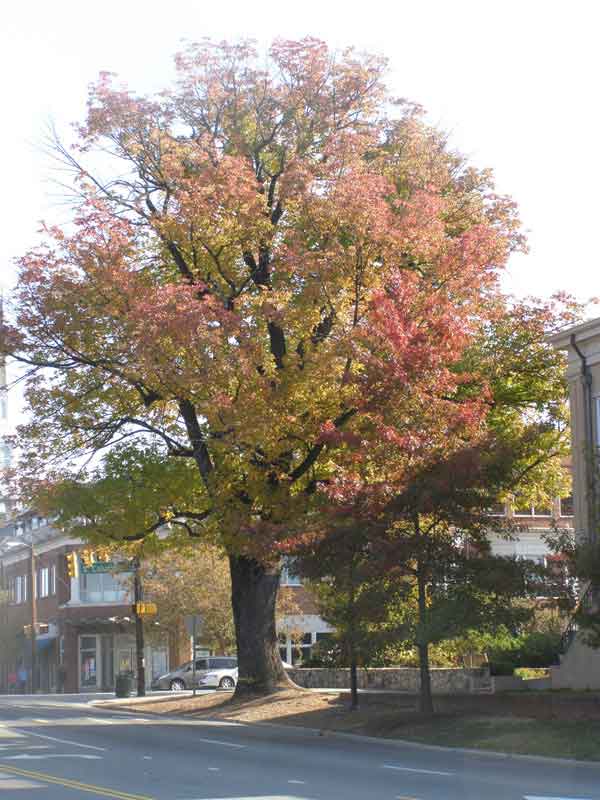Are we at ‘peak color’ yet?
By Ken Moore
Flora Columnist
I believe we humans have lost the ability to step back and fully appreciate what we have around us. In the fall, folks look forward to the brilliant display of deciduous trees as the greens give way to an arsenal of other colors before the seasonal falling of leaves. And every year we try to plan vacations and family drives to western Carolina to enjoy “Peak Week.â€
To assist us, staff of the Blue Ridge Parkway and regional tourist offices list predictions of “Peak Color†weeks at various elevations.
I’ve been trying to catch the “Peak Week†for decades. Each time, I am greeted with: “Oh, you should have been here last week!†or “You’ll have to come back up next week to catch the ‘peak.’†I believe I did catch the peak once, but it was hard to determine because of the fog and wind and rain. The colors of the leaves pressed against the windows of my truck were really spectacular.
For years, I have considered that our own Piedmont has “peaks†that rival the mountains. And our peaks extend for weeks and weeks beginning with the yellow tulip poplars, Liriodendron tulipifera, and the burgundy reds of dogwood, Cornus florida, and sourwood, Oxydendron arborium, as early as late August.
Peak for me is the color-turning of a single tree. Different species turn color at differing times. These past several weeks, I’ve been marveling at the characteristic multiple colors of sweetgum, Liquidambar styraciflua. Yellow, red, orange and burgundy leaves may occur all at once on a single tree! Those multiple shades of reds and burgundies are unbelievable. Last week sweetgums were definitely at peak all along Homestead Road on the north side of town. Along Fordham Boulevard on Chapel Hill’s east side, sweetgums were still green.
So peak must be wherever you are standing and seeing color at the moment. Around here many peaks were evident several weeks ago. It’s definitely here this week, and I can promise we will have it several more weeks to come.
Last summer while sharing tree thoughts with my friend Marion, he described one of his favorite trees for fall color. He calls it the “Rainbow Ash†because he sees rainbow colors as he observes it turn for several weeks. It’s that stately American Ash, Fraxinus americana, on the corner of Franklin and Columbia streets, adjacent to University Baptist Church. Every time I pass that big ash, I give thanks that it continues to survive the street and church-expansion improvements of recent years.
If you require viewing our peaks all at once, walk to the top of Occoneechee Mountain in Hillsborough, dine at Top of the Hill, visit a Jordan Lake bridge or walk the Mason Farm Biological Reserve and you will find impressive panoramas.
You may also notice some of the oaks beginning to turn red from inside the trees’ centers. Look for them fully turned in another two weeks or three. Finally, when our forest trees have just about completed fall leaf drop, you will spot brilliant reds on the forest edges. The late turning of the highbush blueberry, Vaccinium corymbosum, is a signal that our “peak†of color is completed.
A great guide for exploring the colors and fruits of fall is Fall Color and Woodland Harvests by our own local experts, C. Ritchie Bell and Anne H. Lindsey.
Email Ken Moore at flora@carrborocitizen.com. Find previous Ken Moore Citizen columns at The Annotated Flora (carrborocitizen.com/flora).



Comments are closed.